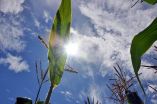(Press-News.org) Researchers at the ARC Centre of Excellence for Coral Reef Studies (Coral CoE) at James Cook University in Australia have found a way to predict illegal fishing activities to help authorities better protect marine reserves.
Marine reserves are the most common strategy used to protect and maintain marine ecosystems around the world.
The International Convention of Biological Diversity aims to have 10 per cent of the world's marine areas protected by 2020.
Many countries are contributing to this target by protecting remote, offshore areas. For example, the United States recently created the world's largest fully protected marine reserve, covering almost 1.27 million square kilometres in the central Pacific Ocean.
But scientists are concerned that while a great deal of effort is being made to create reserves, many countries are simply not able to enforce the laws that are supposed to protect them.
The majority of fishers obey the law, but some don't.
"The success of protected areas depends on whether people comply with the regulations," says Professor Joshua Cinner from Coral CoE.
"Enforcement and compliance issues for large off-shore marine parks are fundamentally different to near-shore protected areas," Professor Cinner says.
He explains that the biggest problems facing countries trying to enforce offshore marine reserves are their distance from land and the difficulty and cost of patrolling large tracts of ocean.
"The distances to these areas can be very large. They are a long way from prying eyes and quite often the regulations are such that you have to actually catch people illegally fishing to prosecute them," Professor Cinner says.
"It can be extremely difficult for authorities to catch illegal fishers in the act."
In a bid to combat the problem, researchers at Coral CoE examined five years' worth of data collected from the World Heritage-listed Cocos Island National Park, a unique marine protected area in the Pacific Ocean about 500 kilometres off the west coast of Costa Rica.
From the records they were able identify illegal fishing patterns and predict both when and where illegal fishing was likely to happen.
They found that illegal fishing was concentrated in a few 'hotspots' and really ramped up during specific lunar phases of some months.
Professor Bob Pressey, also from Coral CoE, says authorities could use this knowledge to match patrols to the time and place when illegal fishers are most likely to be in action.
"Using a targeted approach helps authorities catch and deter illegal fishers, while saving money on patrols," Professor Pressey says.
"Rather than just hoping you can catch illegal fishers effectively by random patrols, we have used previous patrols to look for patterns which tell us when and where people fish illegally," adds Professor Cinner.
Study lead author, Coral CoE PhD candidate, Adrian Arias says the model of predicting illegal patterns from old records can be used to increase the success of patrols in other locations.
"Our research in Costa Rica showed how a systematic and periodic analysis of patrol records can help to increase the probability of catching illegal fishers. This could be done pretty much anywhere that patrol data are available," he says.
Professor Cinner adds that by better targeting limited resources, authorities have a greater chance of successfully protecting marine parks.
"Targeting resources is particularly important for developing countries such as Costa Rica, which have taken on the conservation challenge but don't have the same funding to ensure compliance as a country such as Australia."
INFORMATION:
Paper
Optimizing enforcement and compliance in offshore marine protected areas: a case study from Cocos Islands, Costa Rica by Adrian Arias, Robert L. Pressey, Rhondda E. Jones, Jorge G Alvarez-Romero and Joshua E. Cinner is published in the journal, Oryx. http://dx.doi.org/10.1017/S0030605314000337
Contact
Professor Josh Cinner, Coral CoE - +61 7 4781 6751
Joshua.cinner@jcu.edu.au
Professor Bob Pressey, Coral CoE - +61 7 47816194
bob.pressey@jcu.edu.au
Eleanor Gregory, Communications Manager, Coral CoE - +61 (0) 428 785 895
eleanor.gregory@jcu.edu.au
(SACRAMENTO, Calif.) -- This week's issue of the New England Journal of Medicine features an article that highlights an unprecedented analysis of the nation's childhood head injuries. The study, authored by physicians at UC Davis School of Medicine and Washington University School of Medicine, analyzed more than 43,000 children who were evaluated for head trauma at 25 emergency departments around the United States. In the accompanying supplements, detailed information about these children, their presentations and results will be useful to doctors and helpful to policy makers ...
BOSTON, MA - Sleep disorders are independent risk factors for heart attacks and motor vehicle crashes, which are the two leading causes of death for firefighters in the United States. In a national sample of almost 7,000 firefighters, researchers at Brigham and Women's Hospital (BWH) examined the prevalence of common sleep disorders and their association with adverse health and safety outcomes and found that sleep disorders are highly prevalent, and associated with substantially increased risk of motor vehicle crashes and cardio-metabolic diseases among firefighters.
Findings ...
VIDEO:
NC State researchers have developed a new way to transfer thin semiconductor films, which are only one atom thick, onto arbitrary substrates, paving the way for flexible computing or photonic...
Click here for more information.
Researchers from North Carolina State University have developed a new way to transfer thin semiconductor films, which are only one atom thick, onto arbitrary substrates, paving the way for flexible computing or photonic devices. The technique ...
COLUMBUS, Ohio - In six out of 10 cases, ovarian cancer is diagnosed when the disease is advanced and five-year survival is only 27 percent. A new study suggests that a cancer-killing virus combined with a chemotherapy drug might safely and effectively treat advanced or recurrent forms of the disease.
Researchers at The Ohio State University Comprehensive Cancer Center - Arthur G. James Cancer Hospital and Richard J. Solove Research Institute (OSUCCC - James), led the cell and animal study. Reporting in the journal Clinical Cancer Research, the researchers showed that ...
Some people experience cold not only as feeling cold, but actually as a painful sensation. This applies even to fairly mild temperatures - anything below 20°C. A group of researchers from Lund University in Sweden have now identified the mechanism in the body that creates this connection between cold and pain. It turns out that it is the same receptor that reacts to the pungent substances in mustard and garlic.
Professor of Pharmacology Peter Zygmunt and Professor of Clinical Pharmacology Edward Högestätt have long conducted research on pain and the connection ...
For several years the Danish health service has been moving towards increased centralisation and specialisation in large hospital departments based on the thesis that this provides better results for patients. A new study involving more than 12,000 Danish patients with hip fractures presents a different picture, however:
"Our study shows that the mortality rate for this group of patients is lower in the smaller hospital departments compared to the larger departments. We can also see that the length of stay in hospital is shorter and the quality of care is generally better, ...
Stanford, CA--Photosynthesis is the process by which plants convert energy from the sunlight into chemical energy in the form of sugars. These sugars are used by plants to grow and function, as well as food for animals and humans that eat them.
Plants grow in environments where the availability of light fluctuates quickly and drastically, for example from the shade of clouds passing overhead or of leaves on overhanging trees blowing in the wind. Plants thus have to rapidly adjust photosynthesis to maximize energy capture while preventing excess energy from causing damage. ...
Researchers from Denmark and the U.S. report that babies of women with rheumatoid arthritis (RA) or pre-clinical RA--the period prior to symptoms--are 1.5 times more likely to be born prematurely in Denmark. Findings published in Arthritis & Rheumatology, a journal of the American College of Rheumatology (ACR), indicate that body measurements of the baby at birth were only slightly lower in children exposed to maternal or preclinical RA compared to those with no exposure to the disease. Paternal RA was not found to impact fetal growth or preterm birth risk.
Roughly one ...
SALT LAKE CITY, Nov. 13, 2014 - A University of Utah study of two African tribes found evidence that men evolved better navigation ability than women because men with better spatial skills - the ability to mentally manipulate objects - can roam farther and have children with more mates.
By testing and interviewing dozens of members of the Twe and Tjimba tribes in northwest Namibia, the anthropologists showed that men who did better on a spatial task not only traveled farther than other men but also had children with more women, according to the study published this week ...
New research indicates that the embryos of women who are overweight or obese at the time they conceive display distinct differences in early development compared to embryos from women of a healthy weight.
The results of the study, published today in the journal Human Reproduction, provide strong evidence for a direct link between what mothers eat and the ability of their fertilised eggs to divide and grow. The researchers claim this could potentially have long-term health implications for any children born from these embryos.
The four key findings of the study, which ...

